Hemeroplanes triptolemus
|
|
Updated as per personal communication with Jose Monzon (Guatemala); May 2009
Updated as per More, Kitching and Cocucci's Hawkmoths of Argentina 2005, December 2009
Updated as per
AN ANNOTATED CHECKLIST OF THE SPHINGIDAE OF BOLIVIA, December 2009
Updated as per personal communication with Gregory Nielsen (Villavicencio, Meta, Colombia, January 19, 2011); February 6, 2011
Updated as per CATE, February 6, 2011
Updated as per personal communication with Robert Behrstock (Karanambu, Guyana); November 18, 2011
Updated as per personal communication with Ben Trott (Playa del Carmen, Quintana Roo, Mexico); April 10, 2012
Updated as per "A Hawk Moths fauna of southern Maranhão state, Brazil, ... "; NEVA: Jahrgang 34 Heft 3 November 2013; via Jean Haxaire; April 5, 2014
Updated as per personal communication with Gregory Nielsen (Villavicencio, Meta, Colombia, February 12, 2015; 500m); February 16, 2015
Updated as per personal communication with Ezequiel Bustos (Shilap revta. lepid. 43 (172) diciembre, 2015, 615-631 eISSN 2340-4078 ISSN 0300-5267), January 4, 2016
|
Hemeroplanes triptolemus
heh-mer-oh-PLAY-neesMtrip-TOL-eh-mus
(Cramer, 1779) Sphinx
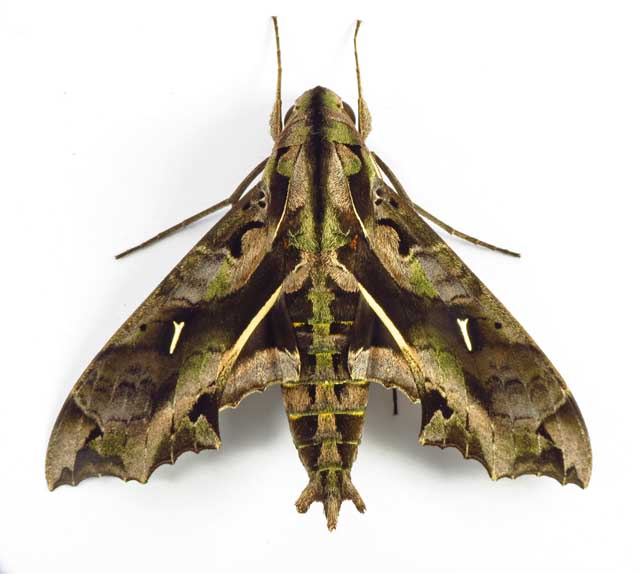
Hemeroplanes triptolemus, Km 13 via Acacias, Villavicencio, Meta, Colombia, 500m,
04°03’55.0 N 073°41’87.0 W, February 12, 2015, 500m courtesy of Gregory Nielsen.
This site has been created by Bill Oehlke.
Comments, suggestions and/or additional information are welcomed by Bill.
TAXONOMY:
Family: Sphingidae Latreille, 1802
Subfamily: Macroglossinae Harris, 1839
Tribe: Dilophonotini Burmeister, 1878
Genus: Hemeroplanes Hubner, [1819]...........
Species: triptolemus Cramer, 1779
|
DISTRIBUTION:
Hemeroplanes triptolemus (forewing length = 34mm)
flies in Surinam (specimen type locality) and westward to Peru.
Specimens are taken from 750-2000 meters above sea level in Peru.
It is recorded in Costa Rica, Belize,
Mexico, Guatemala and probably
flies throughout Central America into
Colombia: Meta (500m);
Ecuador;
Bolivia: Santa Cruz, La Paz (750-1800m);
Argentina: Tucuman;
Brazil: Rio Madeira (CATE); southern Maranhao;
Venezuela and
Guyana: Karanambu (RB).
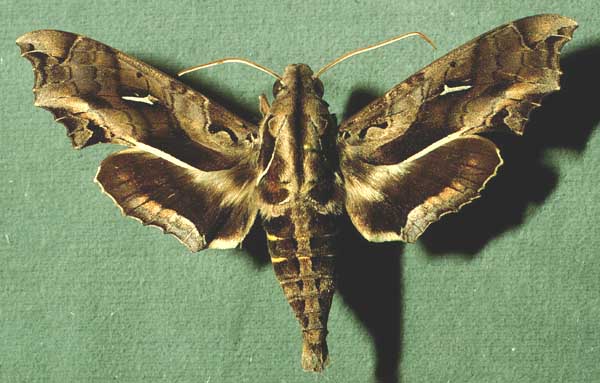
Hemeroplanes triptolemus male, courtesy of Dan Janzen.
In Greek mythology, Triptolemus received
seeds and a chariot pulled by winged dragons from Demeter.
He flew through the sky and sowed the entire inhabited earth.
I believe the genus name comes from the Greek "Hemero" =
everyday life and "planes" = rhealm.
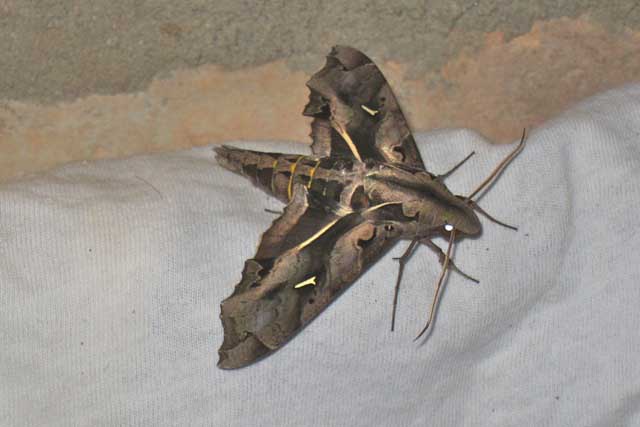
Hemeroplanes triptolemus, Karanambu, Guyana,
November, courtesy of Polly Rothstein via Robert Behrstock, id by Bill Oehlke.
The yellow bands of the abdomen upperside extend across the entire width of the segments.
The forewing upperside has little or no greenish-yellow scaling. The silver mark is 4-5 mm long, and it is basally forked. CATE.
Of the four Hemeroplanes species, H. diffusa is the only one that does not have the silver streak basally forked;
Hemeroplanes longistriga is the only one with elongated extensions of the silver streak; Hemeroplanes ornatus
has yellow abodminal bands that are retricted and do not cross the entire abdomen, while same yellow band extend dorsally across
entire segments in triptolemus.
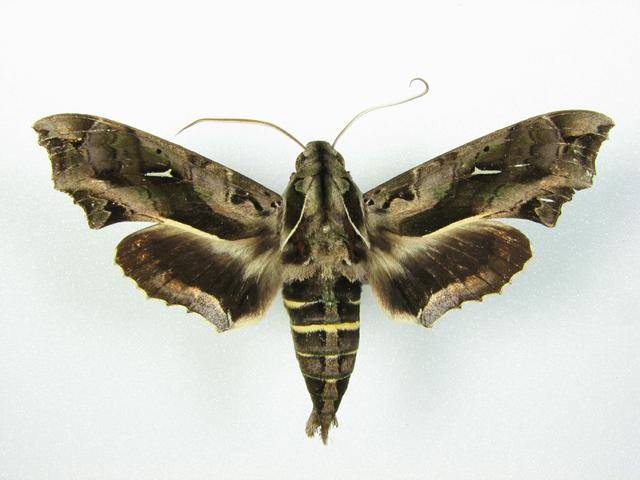
Hemeroplanes triptolemus, Km 13 via Acacias, Villavicencio, Meta, Colombia, 500m,
04°03’55.0 N 073°41’87.0 W, January 19, 2011, lfw=38mm, courtesy of Gregory Nielsen.
FLIGHT TIMES:
There are at least two generations annually
with peak flights in January-February and again in June-July.
ECLOSION:
SCENTING AND MATING:Females call in the males with a
pheromone released from a gland at the tip of the abdomen.
Females seem most active
between 11:30 pm and 2:30 am while males are most active from
12:30-3:00 am.
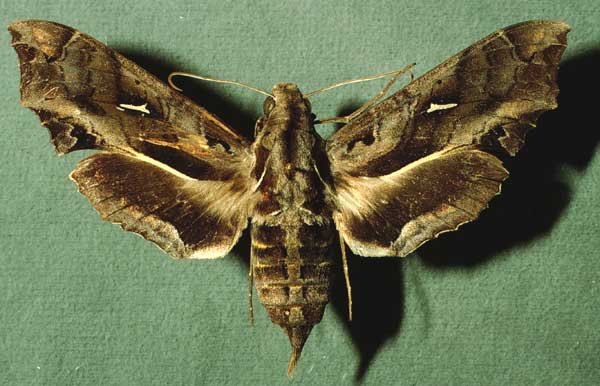
Hemeroplanes triptolemus female, courtesy of Dan Janzen.
EGGS, LARVAE, PUPAE:There are both green (early instars)
and brown (final instar) larval forms.
The caterpillar can "flare" its anterior body segments, giving it a snake's
head appearance.Larvae feed on Mesechites trifida.
To the right you are looking at ventral surface (underside) of
an Hemeroplanes triptolemus larva from Mamiraua Reserve, Amazonas, Brazil,
courtesy of Pablo from Mexico who submitted to
What's That Bug?.
The image was sent to me with permission to post by What's That Bug? moderator
Daniel Marlos.
| 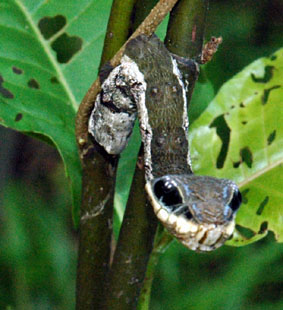
|
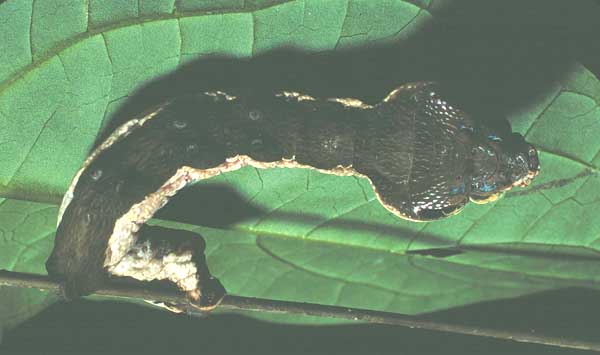
Hemeroplanes triptolemus underside.
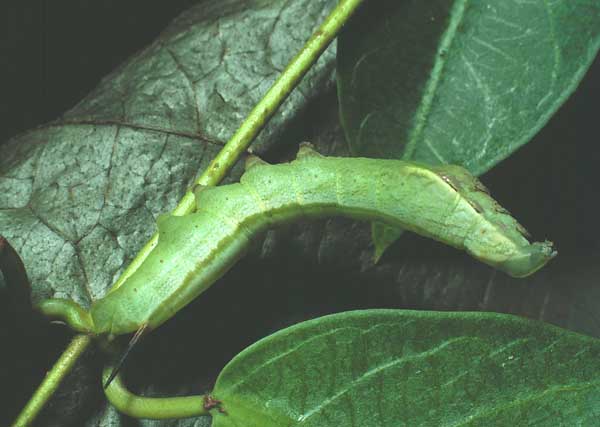
Moths emerge in three weeks from black pupae formed in flimsy
silken cocoons spunup amongst leaf litter. The pupa is smooth and shiny.
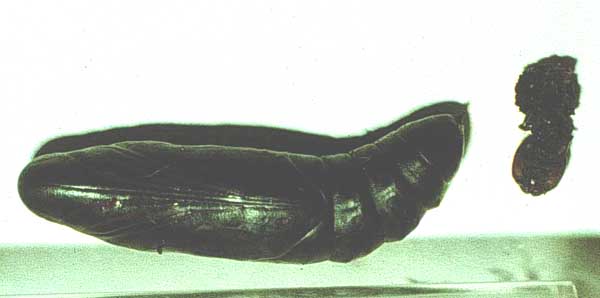
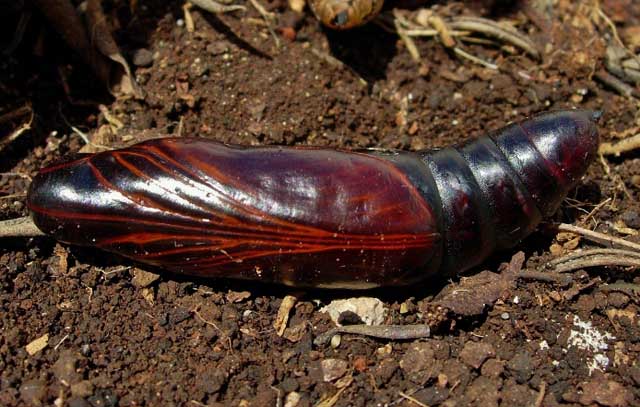
Hemeroplanes triptolemus pupa, Playa del Carmen, Quintana Roo, Mexico,
courtesy of Ben Trott.
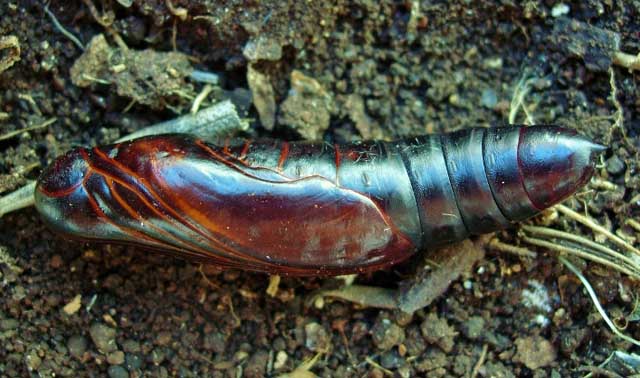
Hemeroplanes triptolemus pupa, Playa del Carmen, Quintana Roo, Mexico,
courtesy of Ben Trott.
Use your browser "Back" button to return to the previous page.
Return to U. S. A. Table
Return to Sphingidae Index
Return to Dilophonotini Tribe
Use your browser "Back" button to return to the previous page.
This page is brought to you by Bill Oehlke and the
WLSS. Pages are on space rented from Bizland. If you would like
to become a "Patron of the Sphingidae Site", contact Bill.
Please send sightings/images to Bill. I will do my best to respond to requests for identification help.
Enjoy one of nature's wonderments: Live Saturniidae (Giant Silkmoth) cocoons.
 | 
Show appreciation for this site by clicking on flashing butterfly to the left.
The link will take you to a page with links to many insect sites. |

Hemeroplanes triptolemus male, Rio Madeira, Brazil, CATE,
on my home computer only.













